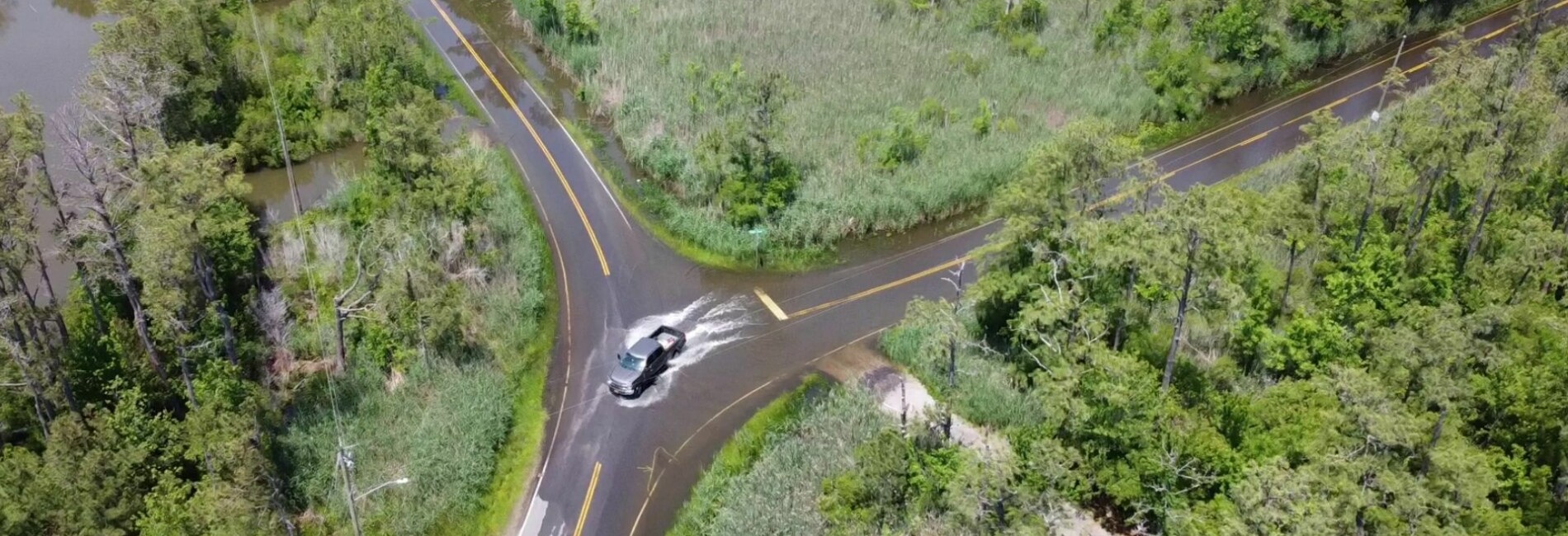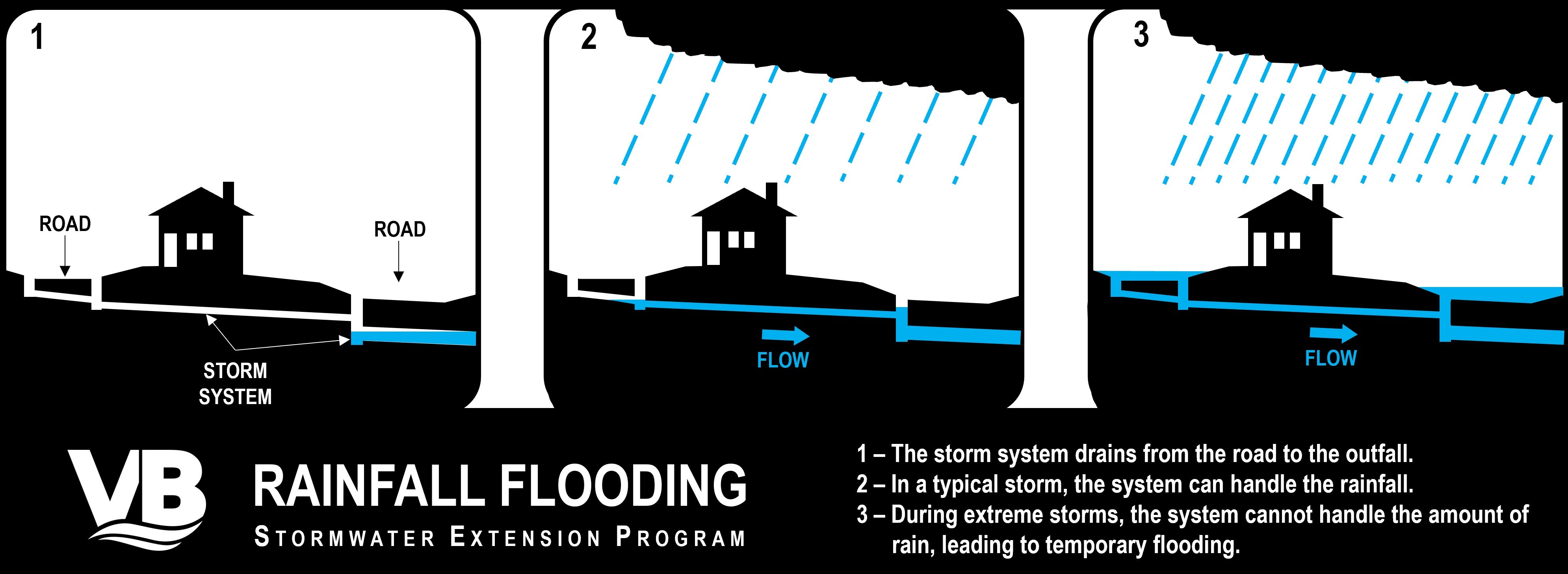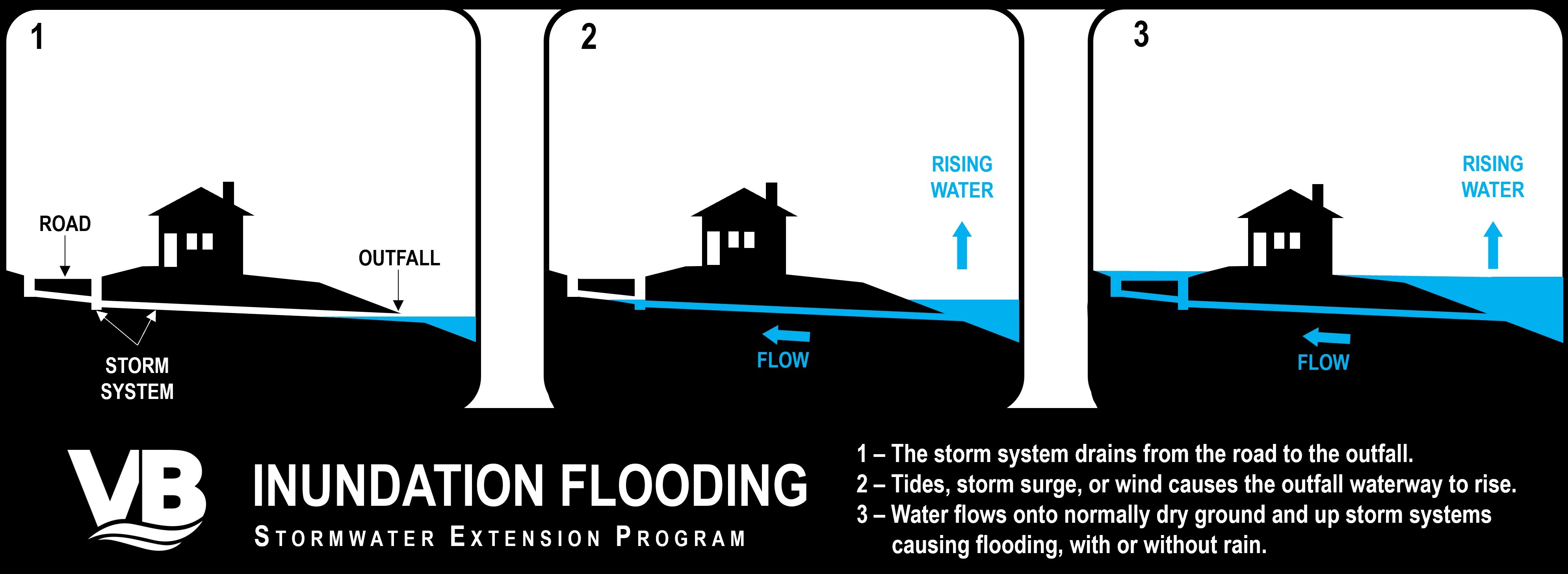
Stormwater Extension Program
A prepared and resilient community begins with informed residents and businesses equipped with the tools and information to weather any storm.
Stormwater Extension Program Manager
Virginia Relay TTY

A prepared and resilient community begins with informed residents and businesses equipped with the tools and information to weather any storm.
Stormwater Extension Program Manager
Virginia Relay TTY
The Stormwater Extension Program exists to give residents and business owners resources to mitigate flooding on their property. While it may not be possible to eliminate flooding in every situation, there are a variety of strategies to lessen the effects to life, property and safety.
Flood mitigation does not have to be as dramatic as raising a house. Even simple things like elevating electronics (Wi-Fi router/TV/video game systems), protecting important documents in a water-resistant tote and having flood insurance will make recovering from a flood easier.
The Stormwater Extension Program provides:
With an overwhelming amount of flood mitigation information available from dozens of sources, it can be hard to know what is right for your home or business. The best way to get started is to complete and submit the checklist below to help the Stormwater Extension program manager determine the type of flooding and the best way to mitigate the impacts.
Once you have submitted the checklist, a Stormwater Extension program manager will contact you with information specific to your case. Wait times will vary based on current case load, and cases involving more severe flooding will be worked first. In the meantime, feel free to:
The Flooding Mitigation Toolbox talks about these two types of flooding and it is important to know the difference to ensure you use the right type of mitigation strategy.

Rainfall flooding is caused when rain can’t drain fast enough. This can happen anywhere in the city and can rise at very different rates depending on the severity and duration of the storm.
In the illustration above:

Inundation flooding is caused by rising tides or wind-driven flooding. It will often rise at a slower but more consistent rate, occur with or without rain, and typically be near the water, however flooding may travel upstream through the stormwater system.
In the illustration above:
It is possible for both to occur in the same location during different types of storms. If you are unsure which affects your property, the Stormwater Extension program manager will be able to help.
Unfortunately, no. Stormwater Extension mitigation strategies are for situations where the flooding is occurring on private property. Using public funds to solve private drainage issues would amount to fraudulent use of taxpayer's funds (similar to having Parks and Recreation come out to mow a homeowners’ grass or the City Garage doing private vehicle oil changes). However, grant opportunities may exist.
Grant opportunities exist at the federal, state, local and nonprofit level and change frequently.
Once you have completed the flooding impact checklist and have an idea of what type of mitigation strategy is right for your situation, check with the Stormwater Extension program manager to find out whether any grants are available for that type of work. Not all strategies will lend themselves to grant funding.
Resilient Virginia, a statewide nonprofit, has created a hub of funding information on its website.
For those interested in raising their home, the City’s Office of Emergency Management handles the coordination with FEMA for grant opportunities.